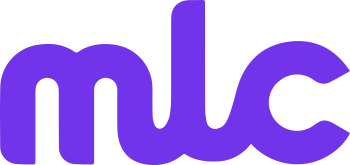Regulatory-Compliant Language Translation for Medical Manufacturers
For medical manufacturers operating in today’s global marketplace, regulatory-compliant language translation has become a critical business function. With stringent regulations governing medical products in different regions, accurate translation of regulatory documentation, labelling, and patient information is not merely a communications issue—it’s a mandatory requirement with significant compliance, legal, and safety implications. This comprehensive guide explores the essential aspects of regulatory-compliant language translation for medical manufacturers and provides practical strategies for meeting complex international requirements.
Understanding the Regulatory Landscape for Medical Translation
Medical manufacturers face an intricate web of regulations governing translated content:
Major Regulatory Frameworks Affecting Medical Translation
European Union Medical Device Regulation (EU MDR)
The EU MDR (Regulation 2017/745) and In Vitro Diagnostic Regulation (IVDR) specify:
- Technical documentation in an official EU language
- Instructions for use (IFU) in the official language(s) of each member state
- Labelling requirements in local languages
- Summary of Safety and Clinical Performance (SSCP) in multiple languages
- Post-market surveillance documentation with translation requirements
US FDA Requirements
FDA regulations mandate:
- English language submissions for US marketing
- Specific requirements for translated materials in clinical studies
- labelling in appropriate languages for intended markets
- Requirements for translated informed consent in multi-national studies
ISO Standards for Medical Products
Key ISO standards affecting translation include:
- ISO 13485:2016 for quality management systems
- ISO 14155:2020 for clinical investigations
- ISO 15223-1:2021 for symbols and labelling
- ISO 17100:2015 for translation services
These standards establish quality frameworks that directly impact translation requirements.
Consequences of Non-Compliant Translation
Failing to meet regulatory translation requirements can result in:
- Delayed or rejected regulatory submissions
- Product recalls due to labelling deficiencies
- Import restrictions in international markets
- Liability exposure from inadequate patient information
- Reputation damage in professional and consumer markets
For medical manufacturers, regulatory-compliant translation is a direct business necessity that impacts market access and risk management.
Critical Documentation Requiring Regulatory-Compliant Translation
Medical manufacturers must ensure compliant translation across a wide range of documentation:
Regulatory Submission Documents
- Design history files and technical documentation
- Risk management files and analysis reports
- Clinical evaluation reports and clinical investigation documentation
- Quality management system documentation
- Regulatory correspondence and certificates
Product Information and labelling
- Device labels and packaging
- Instructions for use (IFU) and operation manuals
- Patient information leaflets and implant cards
- Training materials for healthcare professionals
- Service and maintenance documentation
Post-Market Documentation
- Post-market surveillance reports
- Vigilance reporting and adverse event notifications
- Periodic safety update reports (PSURs)
- Field safety notices and recall communications
- Post-market clinical follow-up studies
Quality System Documentation
- Quality manuals and standard operating procedures
- Validation and verification protocols
- Audit reports and corrective action plans
- Training materials and competency assessments
- Supplier management documentation
Each of these document categories has specific regulatory requirements and quality standards that must be maintained across all language versions.
Key Challenges in Regulatory-Compliant Medical Translation
Achieving regulatory compliance in medical translation presents several specialised challenges:
Regulatory Terminology Precision
Medical regulations contain specialised terminology that must be translated with absolute precision:
- Regulatory-defined terms with specific legal meanings
- Risk classification and assessment terminology
- Conformity assessment language
- Standards-specific terminology
- Adverse event and vigilance reporting language
Even slight variations in translated regulatory terminology can alter meaning and potentially affect compliance status.
Cross-Regulation Harmonisation
Medical manufacturers often need to comply with multiple regulatory frameworks simultaneously:
- Balancing EU MDR, FDA, and other regional requirements
- Maintaining terminology consistency across different regulatory systems
- Addressing contradictory requirements in different markets
- Managing changing regulations with translation implications
This regulatory complexity requires sophisticated translation management systems and processes.
Technical Accuracy Requirements
Medical documentation contains complex technical content:
- Engineering specifications and tolerance values
- Software interface descriptions
- Electronic systems and connectivity information
- Material biocompatibility data
- Manufacturing process details
Translators must understand both the technical concepts and the regulatory context to provide accurate translations.
Clinical and Scientific Content
Medical translators must accurately convey specialised clinical information:
- Clinical trial methodologies and results
- Statistical analysis and significance assessments
- Medical condition and treatment descriptions
- Scientific mechanisms of action
- Benefit-risk analysis frameworks
This requires translators with both linguistic skills and scientific/medical knowledge.
Best Practices for Regulatory-Compliant Translation Management
To navigate these challenges effectively, medical manufacturers should implement these best practices:
1. Establish a Comprehensive Translation Management System
Develop a systematic approach to translation management:
- Create a formal translation policy and standard operating procedures
- Define clear workflows for document translation
- Establish version control and change management processes
- Implement document tracking systems with regulatory alignment
- Define quality metrics and compliance verification steps
A formal translation management system integrates regulatory requirements into every step of the translation process.
2. Work with Specialised Medical Regulatory Translators
Partner with translation providers who understand both medical content and regulatory frameworks:
- Translators with relevant scientific or medical backgrounds
- Experience with specific medical product categories
- Familiarity with target market regulatory requirements
- Certified translation capabilities for official submissions
- Demonstrated quality management systems
Specialised medical translators can anticipate regulatory issues and address them proactively.
3. Implement Comprehensive Terminology Management
Develop and maintain detailed terminology databases:
- Regulatory-specific terminology in all target languages
- Product-specific terminology with approved translations
- Standardized phrases for warnings and precautions
- Regulatory authority names and official translations
- Quality system terminology
Consistent terminology management ensures compliance and reduces translation errors.
4. Conduct Thorough Translation Validation
Establish multi-stage validation processes:
- Technical review by subject matter experts
- Regulatory compliance verification
- Back-translation of critical safety information
- Country-specific regulatory reviews
- Final quality assurance checks
This validation approach verifies both linguistic accuracy and regulatory compliance.
5. Integrate Translation into Regulatory Strategy
Make translation considerations part of the overall regulatory planning:
- Identify translation requirements during regulatory planning
- Budget for translation costs in regulatory submissions
- Build translation timelines into regulatory schedules
- Consider translation complexity when entering new markets
- Include translation management in regulatory audits
This integration ensures that translation requirements don’t become last-minute compliance issues.
6. Leverage Technology Appropriately
Utilise specialised technology solutions while maintaining human expertise:
- Translation memory systems for consistency
- Terminology management software
- Workflow automation for document tracking
- Quality control tools for verification
- Secure document management systems
Technology can improve efficiency and consistency while maintaining the human expertise needed for regulatory compliance.
Specialised Requirements for Different Medical Product Categories
Different medical product categories present unique translation challenges:
Medical Devices and Equipment
Translation considerations include:
- User interface text and software menus
- Complex technical specifications
- Maintenance and calibration information
- Risk classification-specific requirements
- Connectivity and interoperability details
Pharmaceutical Products
Pharmaceutical translation requirements include:
- Chemical composition and formulation details
- Pharmacokinetic and pharmacodynamic information
- Dosing and administration instructions
- Drug interaction warnings
- Complex manufacturing process descriptions
Combination Products
Products combining device and drug components require attention to:
- Dual regulatory pathway requirements
- Integrated instructions for both components
- Specialised terminology across categories
- Complex risk analysis translations
- Multiple quality system standards
In Vitro Diagnostic Products
IVD translation includes specialised content:
- Test performance characteristics
- Analytical validity information
- Clinical validity evidence
- Sample collection and handling instructions
- Result interpretation guidance
Each product category requires specialised knowledge of both the technical content and the specific regulatory requirements governing that category.
Emerging Trends in Regulatory-Compliant Translation
The landscape of regulatory-compliant translation continues to evolve:
Regulatory Convergence Initiatives
International efforts to harmonise medical regulations are affecting translation:
- Medical Device Single Audit Program (MDSAP)
- International Medical Device Regulators Forum (IMDRF)
- Pharmaceutical Inspection Co-operation Scheme (PIC/S)
- International Council for Harmonisation (ICH)
These convergence efforts may eventually reduce translation complexity, but currently require careful navigation of transitional requirements.
Digital labelling and eIFU
Electronic instructions for use (eIFU) and digital labelling are changing translation needs:
- Regulatory frameworks for electronic content delivery
- Multilingual interface requirements
- Requirements for accessibility in multiple languages
- Mechanisms for electronic updates and version control
These digital approaches offer new opportunities but come with their own regulatory translation requirements.
Artificial Intelligence and Machine Translation
AI technologies are increasingly supporting (but not replacing) human translation:
- Regulatory-specific machine translation engines
- AI-assisted quality control for compliance
- Automated consistency checks across languages
- Predictive terminology suggestions
While AI can enhance efficiency, regulatory-compliant translation still requires human expertise and validation.
Remote Clinical Trials and Global Studies
The growth of decentralised clinical investigations creates new translation challenges:
- Patient-facing materials in multiple languages
- Electronic consent translations
- Remote monitoring documentation
- Virtual clinical trial platforms with multilingual requirements
These trends require innovative approaches to regulatory-compliant translation.
The Business Case for Excellence in Regulatory Translation
Investing in high-quality regulatory-compliant translation delivers substantial business benefits:
Accelerated Time to Market
Professional regulatory translation can:
- Prevent submission delays due to translation deficiencies
- Enable simultaneous submissions in multiple markets
- Reduce review cycles by addressing translation issues proactively
- Support efficient responses to regulatory queries
These time advantages directly impact revenue potential and competitive positioning.
Risk Mitigation and Compliance Assurance
Excellence in regulatory translation provides:
- Protection against non-compliance findings in audits
- Reduced risk of recall or field action due to labelling issues
- Defense against liability claims related to instructions or warnings
- Documentation to demonstrate regulatory due diligence
This risk management value extends beyond immediate compliance to long-term business protection.
Enhanced Product Acceptance
High-quality translation supports:
- Better product understanding by healthcare professionals
- Improved patient compliance with instructions
- Stronger market perception of product quality
- Reduced support requirements and user errors
These benefits translate directly to product success in international markets.
Operational Efficiency
A systematic approach to regulatory translation improves:
- Predictable translation budgeting and timelines
- Streamlined updates when product or regulatory changes occur
- Reduced duplication of effort across markets
- More efficient handling of regulatory correspondence
These operational benefits reduce the total cost of regulatory compliance.
Key Takeaways for Medical Manufacturers
Successfully managing regulatory-compliant language translation requires:
- Regulatory Intelligence: Understanding the specific translation requirements in each target market
- Specialised Translation Partners: Working with experts who understand medical regulations
- Systematic Processes: Implementing comprehensive translation management systems
- Validation Practices: Conducting thorough verification of regulatory compliance
- Strategic Integration: Making translation part of the overall regulatory strategy
- Future Readiness: Preparing for evolving requirements and digital transformation
By implementing a strategic approach to regulatory-compliant translation, medical manufacturers can ensure compliance, accelerate market access, and protect their brand reputation in global markets.
For manufacturers seeking to navigate these complex requirements effectively, partnering with specialised translation services with proven expertise in regulatory-compliant medical translation can provide the guidance and support needed for successful international regulatory compliance.

